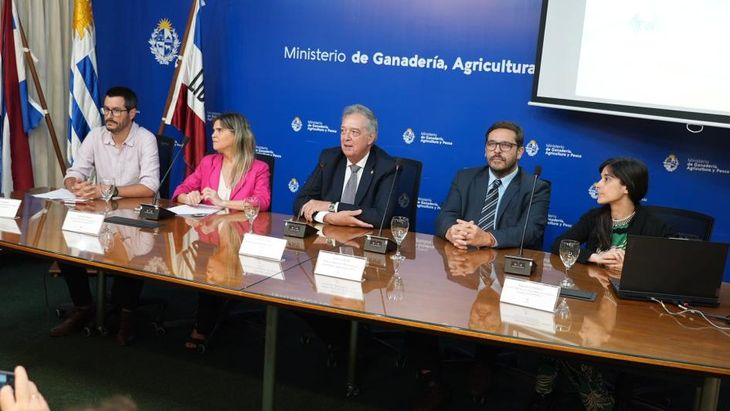The Ministry of Livestock, Agriculture and Fisheries foresees an improvement in the GDP of the sector, after the historic drought.
He Ministry of Livestock, Agriculture and Fisheries (MGAP) forecasts a growth of 8.4% for the agricultural sector next year, with a strong push from summer crops, activity forestry and the task, after a 2023 affected by the drought.
The content you want to access is exclusive to subscribers.
Regarding the climate phenomenon, it caused losses of 1,883 million dollars, according to the yearbook of the Office of Agricultural Programming and Policy (Opypa), presented this Tuesday, where the direct gross impact of the situation in Uruguay.


The report was presented by the Opypa technique, Angela Cortelezzi, who reviewed that “between 2020 and 2023 the country suffered a drought without historical precedents, which caused losses and damages in all agricultural subsectors”, but specifically affecting during 2022/2023 the level of production and the exports.
When delving into this situation, the leader maintained that the Agricultural GDP registered a drop of 2.9% in 2022 and for this year an expansion of agricultural value added of 5.4% is projected, due to “the good harvest projected for winter crops 2023/24, the greater forestry activity – driven due to the expansion of the industry cellulose- and the recovery of summer crops.”
This way, Cortelezzi He anticipated that “in 2024, the sectoral GDP would grow 8.4% due to the better performance expected for 2023/24 summer crops, the expansion of forestry activity and the greater extraction of livestock for slaughter.”
Fernando Mattos, MGAP, Buffa.jpg

What happens with exports?
With respect to the exports In the sector, the report showed that external sales of goods would be around $11.2 billion at the end of 2023, that is, a year-on-year decrease of 17%.
The decline is due to the lower export value of agroindustrial goods, due to the significant impacts that water crisis had on production and the decline in some relevant export prices for the country.
This is why it is projected that the agroindustrial exports will be around $8.2 billion when the year ends, which implies a 28% drop in value compared to the 2022 record.
However, for next year there are expectations that there will be a rebound in agro-industrial loans measured in value. To achieve this situation, a significant increase in sales of cellulose, which will thus become the main export product.
Embed – Presentation of the SENDA strategy and then the launch of the Opypa Yearbook
Source: Ambito




